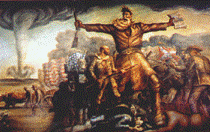History, Department of

James A. Rawley Graduate Conference in the Humanities
Date of this Version
April 2006
Document Type
Article
Abstract
Although mad cow disease has reigned supreme as the most feared bovine malady for the last twenty years, foot and mouth disease (FMD) held that title for much of the twentieth century. Since the 1920s, it has been illegal to import fresh or frozen meat into the U.S. from countries where FMD exists. This sanitary embargo has been the source of cooperation and hostility in inter-American affairs. Some scholars consider the ban to be little more than protectionism, while others recognize the real biological threat. A cursory glance at the 1924 FMD outbreak in California reveals the high social and economic costs of an epidemic. The 1924 incident led to the later embargo which affected all Latin American nations. Mexico and the United States entered into a co-operative elimination campaign in the 1950s that successfully eradicated the disease south of the Rio Grande. Argentina vehemently protested the embargo and tried to soften its impact, but did little to eliminate FMD on the ground. It was not until the late 1990s that U.S. importers were able to trade in Argentine fresh and frozen meat. The case of FMD illustrates how the powerful undercurrents that surface in a moment of violence linger long after conflict subsides. Scholars have tended to focus on the political aspects of the FMD ban and neglected the biological realities of a highly contagious and virulent disease. A similar neglect of the biology resulted in a prolonged conflict between the U.S. and Argentina. In a mad cow world, with America now on the wrong side of meat embargoes, the cattle industry would do well to consider the value of co-operation and the futility of protest and denial


Comments
Paper delivered at the 1st Annual James A. Rawley Graduate Conference in the Humanities, Lincoln, NE. April 8, 2006. Copyright © 2006 David Nesheim.